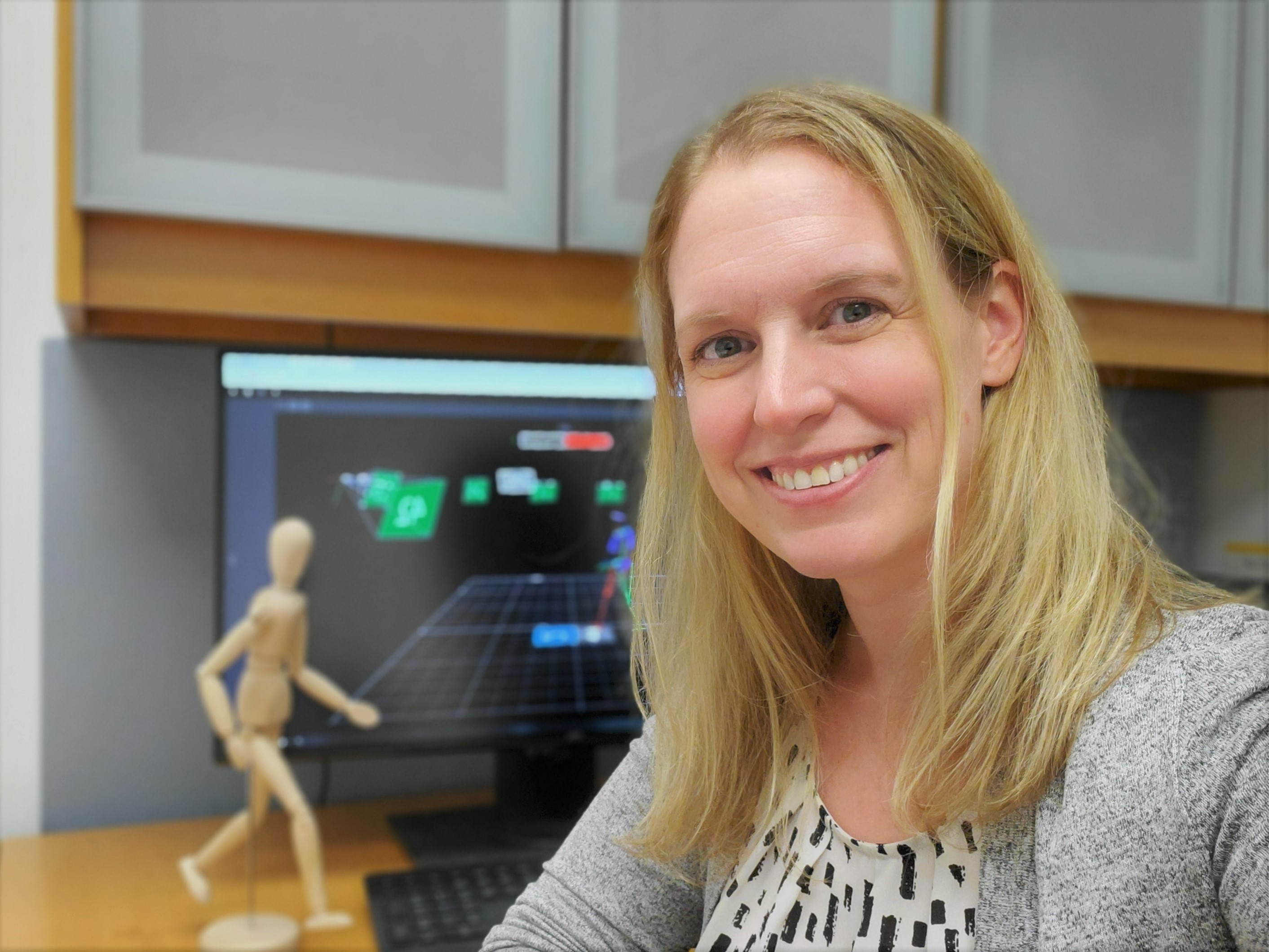Erin Vasudevan

Assistant Professor
PhD, University of Alberta, Canada
Office: 535 Life Sciences Bldg
Phone: (631) 638-6103
Curriculum vitae
Research interests: Motor learning, gait rehabilitation, motor development, stroke,
traumatic brain injury
Biography
Dr. Erin Vasudevan is a neuroscientist who studies how the brain and spinal cord control walking. Walking is often taken for granted by people without motor disabilities. However, efficient and safe walking around the real world is quite complex. It requires one to navigate obstacles (e.g., stepping on a curb), pay attention to approaching objects (e.g., cars), adjust to changes in the terrain (e.g., a slippery floor), and adjust to changes in one's own body (e.g., after injury). Dr. Vasudevan’s research goal is to study how people without neurological damage successfully navigate real-world environments and how they adjust to changes in these environments. She also studies how neurological damage such as stroke or brain injury affects the ability to walk. She works with clinicians and engineers to develop gait retraining techniques and devices to improve rehabilitation outcomes.
Educational Background
BSc (Hon), Physiology, University of Alberta, Canada
PhD, Neuroscience, University of Alberta, Canada
Postdoctoral Fellow, Neuroscience, The Johns Hopkins School of Medicine, Baltimore,
MD
Funded Grant Activity
S-BOLD (Stony Brook Online Learning Development Award)
7/1/19-6/30/20
Development of Online BIO 203 – Foundations of Biology: Cellular and Organ Physiology
Our principle objective is to provide a flexible and effective mechanism to address
increasing enrollment pressures, eliminate unmet demand for BIO 203, and facilitate
progress through the introductory biology curriculum.
Role: Co-Principal Investigator
Improving Paretic Leg Walking Propulsion Post-Stroke with a Mechanical Device, R03
HD092822
08/16/17-07/31/20
Our objective is to evaluate a low-cost, easy-to-use device for hemiparetic gait rehabilitation
following stroke. The Gait Propulsion Trainer (GPT) targets an underlying cause of
hemiparetic gait by selectively forcing the weaker leg to work harder to propel the
body forward during walking. This project represents a first step toward our ultimate
goal of developing novel approaches to gait rehabilitation that can be used by a large
segment of the stroke population, particularly those currently underserved by rehabilitation
services.
Role: Co-Principal Investigator
American Heart Association Scientist Development Grant, 12SDG12200001
07/01/12-06/01/17
Optimizing Locomotor Adaptation for Rehabilitation Post-Stroke
The projects in this grant test several methods which we hypothesize will improve
the retention and generalization of learned gait patterns in people who have had a
stroke.
Role: Principal Investigator
Pennsylvania Department of Health
01/01/13-06/30/14
Home Based Mirror Therapy for Lower-Limb Rehabilitation Post-Stroke
Mirror therapy (MT) is a relatively new therapeutic intervention that has been shown
to improve the range of motion, speed, and accuracy of hemiparetic upper limb movements.
MT uses a mirror to create an illusion where movements of the unimpaired limb appear
as if they are being made by the impaired limb. This study investigated whether a
home-based form of MT is an effective treatment for lower limb hemiparesis.
Role: Principal Investigator
